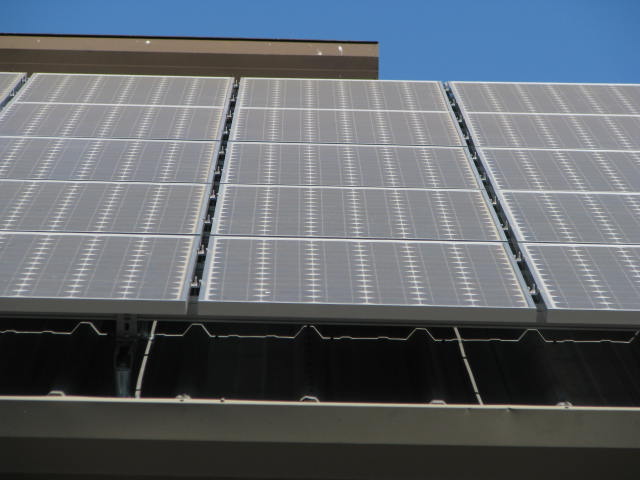Community solar: "Why don't they get it in Washington?"


It was part rhetorical question and part heart-felt plea from far beyond the Beltway for America to get serious about global warming and reducing its dependence on fossil fuels.
Just some more solar panels?
What's different here? First, in the spirit of full disclosure, I'm part owner of that solar installation, along with dozens of other Ashlanders. For just over $800 I "bought" one of those panels. The payments will help the city pay back the bonds to Bank of the Cascades, and then each owner gets discounted electricity bills as the solar plant generates "free" energy which goes onto the municipally-owned grid. Needless to say, if you are one of the majority of Americans under the thumb of a for-profit energy company you aren't ever going to buy into a solar plant like this one. Though I must admit I don't like hot summers but I sure am happy with all that sunshine outside today. "My panel" is really cooking.
[poll id=22]

Some Ashlanders who did buy panels explained why. Some said they couldn't afford panels at home, others that they had no solar footprint at their house. One buyer used the $600 IRS refund to buy part of the project. That got applause locally. Some Washington pols might just scowl at that. One octogenarian said he was buying a panel as a legacy to future generations. The city official who manages the project is Electricity Director Dick Wanderschied. He quoted his friend who clearly supported the unique community solar plan: "If you're not living on the edge, you're taking up too much space."
Today little Ashland is living on the solar edge of what could be a new energy economy. And it's not based on corn and ethanol. Washington, you out there? The day's motto: "Harvest the sun to power Ashland." Too cornball for any worthy lobbyist in this age, I'm afraid. But the sun and the ticking meter sure felt good. As one person said in buying a panel, it;'s the right and responsible thing to do.
Here's the city website explaining how the project works. If you moved here you could buy in for as little as $206 for a quarter-panel. Think of it as a small solar pizza. It delivers everyday.
ADDENDUM:
Yes, this project got federal tax credits for both bank and city. Yes, it costs now about $20 per kilowatt hour. And then let;'s consider all the tax credits and subsixdies the fossil fuel folks get for their industry, and the fact that there are no charges levied for all the CO2 and other greenhouse gases fossil fuel users--including my own cars--put into the only atmosphere this planet has. What s should it cost for me and Exxon and Peabody to pollute the single atmopsphere? Let's figure that in before wew write off solar as uneconomical. It's not just about who collects the most cash.